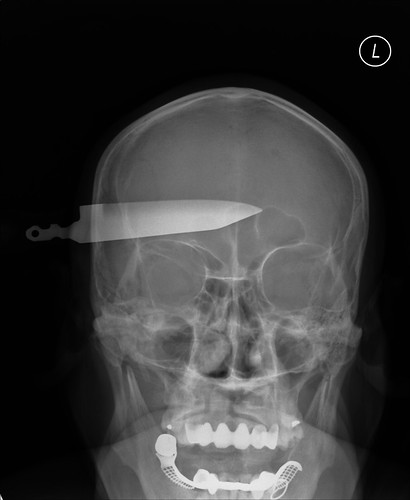Turn Right On Red Against Green Arrow Indication
Continued from http://www.ontariohighwaytrafficact.com/topic976.html
ticketcombat wrote:Now back to the green arrow tangent. I'm going to take one more stab at it. And yes it's making my brain hurt!
First the Act makes a distinction between a green indication and a green arrow indication. An indication and an arrow indication are different. Keep that in mind. Note also that s.14 does not require drivers to stop. Only s. 18 does. If you are not going in the direction of the arrow, s.14 does not give drivers the choice of stopping: "may proceed only to follow the direction shown by the arrow". In other words, facing a red indication and a green arrow, s. 14 states they may turn in the direction of the arrow. Also note that s. 14 does not state "Despite s.18, drivers may proceed in the direction of the arrow without stopping." So imagine you were driving straight and now you've got a red light and a green arrow going left. Does that mean you have to go left? No, you can remain stopped until you are allowed to proceed straight. s. 18 & 14 work together. Let's look at some scenarios:
Scenario 1: Red indication. Driver must stop [s.18] but can turn right after stopping (s.19).
Scenario 2: Red indication, green arrow indication pointing right. The driver must stop [s18] OR she can turn right without stopping (s.14).
S.19 states "without a green indication showing" (that means a green light NOT an arrow). S. 19 (without mentioning s.14) states that a driver approaching an intersection without a green indication cannot turn right unless they come to a complete stop. Doesn't matter if a right green arrow is showing or not. Obviously that defeats the purpose of s.14. So let's include s. 14. Now s.19 is "subject to" s. 14. Meaning without a green indication showing, the driver can turn right without stopping because s.14 takes precedence.
Scenario 3: Red indication, green arrow indication pointing left. Driver must stop [s.18]. Driver can turn left without stopping (s.14). S. 19 says after stopping if there is no green indication, you can turn right. If you couldn't do this, then s.14 would have stated "Despite s.19 a driver can only proceed in the direction of the green arrow indication."
However I can see the s. 19 "subject to" being equivalent to a s. 14 "despite". So yes I am willing to admit it could be successfully interpreted the other way, as Bear states, depending on the day and the JP. But I do want to point out that s. 14 does not state "Despite s. 18". So 14 and 18 have to work together.
As I understand it, "indication" covers all traffic control signals, arrow or not. "Circular green indication" is the full green signal, "green arrow indication" is the green arrow. Now, I couldn't follow why you referred to that distinction, so I'm not sure what this changes in your argument. It's late at night...I'll come back to it tomorrow. ![]()
